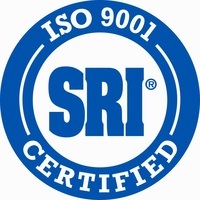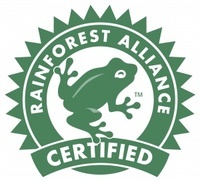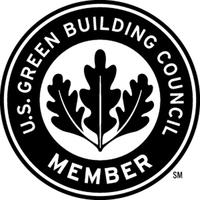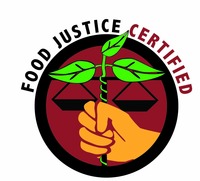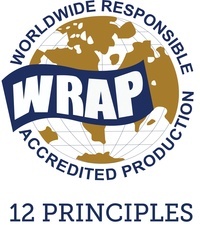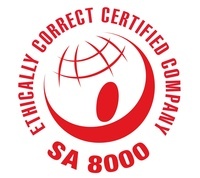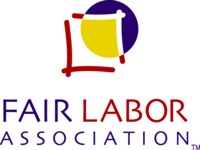-
-
-
Infrastructure space/
Keller Easterling:
Quality
-
-
ISO Quality Management
The phone-voice promises, “Your call will be monitored for quality assurance purposes.” Credit cards, all .76mm thin, slide into slots and readers all around the world. Screw threads conform to a given pitch. Every make of car shares the same dashboard pictograms. Batteries with consistent durations are sized to fit any device. Books, magazines, music, and audiovisual works are indexed with ISBN numbers. Paper sizes and the machines that handle them are standardized. RFID tags, transshipment containers, trucks, car seats, film speeds, protective clothing, book bindings, units of measure, personal identification numbers (PINs), and fasteners of all kinds conform to global standards.[1]
All of these shared standards emanate from the International Organization for Standardization, or ISO—a quintessential parliament of extrastatecraft. Founded in 1947, ISO is a private nongovernmental organization (NGO), but also a global meta-organization—an organization of organizations. It convenes a UN-style assembly of member nations as well as private entities, and is a crossroads for nearly every type of organization in the world (e.g. NATO, WTO, ILO, OECD, etc.), most which maintain a currency in standard making.[2] ISO, like its strategic partners the ITU, the IEC and the WTO, has its headquarters in Geneva—a Vatican of sorts for international organizations.
Regarded by some as no less than the beginnings of a “world state,” ISO formats the performance and calibration of many components of infrastructure space, at every scale from the microscopic to the gigantic. The organization has been “steadily and energetically at work promoting the construction of a uniform built environment.” [3] ISO presides over a multitude of technical standards that establish criteria for everything from roller bearings and refrigerants to lubricants and footwear. There are technical standards for the parameters of a JPEG (ISO/IEC: 15444) or an MPEG (ISO/IEC 21000), for cooking pasta (ISO 7304-2:2008), and even a standard glass for wine tastings (ISO 3591:1977).[4]
In addition to technical standards, ISO also develops management standards, and pins its hopes of universal engagement on a management standard addressing the mysterious term “quality.” The ISO 9000 family of standards establishes principles of quality management—procedures for managing any industry to better satisfy customers and improve both production and market status. Quality standards do not dictate technical specifications for a product but rather offer management guidelines for a process or quality system. Using systemic processes of information gathering, quality promises to deliver a well-run company, with strong supplier relations and enhanced customer satisfaction.[5]
ISO’s institutional disposition is at once evangelical and almost secretive. In zones all over the world, most companies sport ISO 9000 certification as a shibboleth or seal of approval. For any global project, quality certification is regarded as a necessary signal to international contractors and governance agencies. In 1992, the European Union required ISO 9000 compliance as a condition within its trade policies.[6] While ISO may sometimes strike the profile of a public information source or an intergovernmental body, it is a private, voluntary, nongovernmental organization—a business that sells its standards, protects its clients, and maintains no public archive. Its history and its multi-scalar effects on the environment are difficult to track.
Broadening its reach, ISO has recently also developed new strains of quality management standards for the environment, education, health, social responsibility, and even government itself. This private form of governance thus continues to enter and assert its authority in a public arena without a public political dialogue.Like its management consulting cousins at McKinsey & Co. or Booz Allen, ISO coaches companies as well as countries, influencing government policy, regional planning, and macro-urbanism.
Quality management has actually become something like a peculiar global custom—the unofficial patois of infrastructure space. Armies of businessmen speak its managementese in conference centers, breakout rooms, webinars, blogs and books. Every utterance is worthy of an acronym, a bullet-pointed list, a mandala or a pyramidal diagram. Any idea must be expressed in an unctuous, motivational aphorism. Quality management is exemplary of a supposedly rationalized set of practices serving as an ideal vessel of irrationality.
As important as it is to understand what quality management does, it is equally important to understand what it does not do—indeed what it obstructs. Despite being treated as a seal of approval, it does not set technical performance standards for some of the world’s most pressing issues related to labor and the environment. Only its non-specific, non-binding management standards inch toward these issues. They may stimulate and leverage productive change, but they may also inoculate organizations against regulation while developing more expensive and opaque bureaucracies.
With its multitude of standards ISO speaks many technical languages, but it has no management standards that deploy spatial variables. Space itself is a technology and a medium of information. The matrix of repeatable spatial products like malls, resorts, golf courses, and suburbs, as well the urban formulas for zones or broadband networks, contribute to a global spatial operating system. Altering infrastructure space is often a matter of global concern, exceeding the reach of nations and businesses and requiring the scale and leverage of extrastatecraft, but it is ordinarily manipulated with non-spatial tools. The global zone and broadband networks, for instance, shape huge swaths of territory according to urban defaults dictated by econometrics or informatics. In environmental landscapes like rainforests, the technical language of the carbon market is used to galvanize the cooperation of groups of states. The global financial market recently collapsed over the proliferation of spatial products in the suburban housing market, but only legal and financial tools were available to address the crisis.
ISO’s management standards industry provides an index of experiments attempted as well as questions unexplored in the design of global infrastructure space. Learning from both the successes and the absurdities of ISO, what kinds of spatial protocols—crafted not as standards but as an interplay of spatial variables—could be instrumental in the global parliaments of extrastatecraft?
[1] See www.iso.org and Thomas A. Loya and John Boli, “Standardization in the World Polity: Technical Rationality over Power,” in John Boli and George M. Thomas, eds., Constructing World Culture: International Nongovernmental Organizations since 1875 (Stanford: Stanford University Press, 1999), 169–97.
[2] Goran Ahrne and Nils Brunsson, Meta-organizations (Cheltenham: Edward Elgar, 2008).
[3] Ibid.,197,169.
[4] See www.iso.org. JPEG is an acronym for Joint Photographic Expert Group; MPEG, Moving Picture Experts Group.
[5] Staffan Furusten, “The Knowledge Base of Standards,” in Nils Brunsson, Bengt Jacobsson, eds., A World of Standards (Oxford: Oxford University Press, 2000), 71–8.
[6] Mendel, “The Making and Expansion of International Management Standards,” 137–66.
-
The Badges of Extrastatecraft
ISO is just one NGO among the other 35,000 NGOs in what Gary Gereffi has called the NGO-Industrial Complex.[1] These organizations have evolved to influence corporate policy and leverage political changes that governments fail to address, but they can also act as a smoke screen to inoculate corporations against any reckoning. A company like Apple, Nike, or Starbucks may display next to their logo a collection of badges and self-certifications from NGOs for which they have provided a majority of the funding. For instance, The Fair Labor Association was called into question in the investigation of Foxconn factories because it received funding from Apple, a Foxconn client. As Judith Kimerling points out, for all the activity in this burgeoning sphere of extrastate consensus, there are many signal absences, primarily related to environment and labor. She writes that the “imbalance in international governance is illustrated by the fact that under the rules governing trade today, there is a meaningful legal mechanism to hold a company accountable for pirating a Madonna video, but not for contaminating the environment or using forced or child labor.”[2]
[1] G. Gereffi, R. Garcia-Johnson, and E. Sasser, “The NGO-Industrial Complex,” Foreign Policy, no. 125 (2001).
[2] Kimerling, “International Standards in Ecuador’s Amazon Oil Fields,” 290.
-
-
-
-
-
-
©2012 The authors and contributors
-
